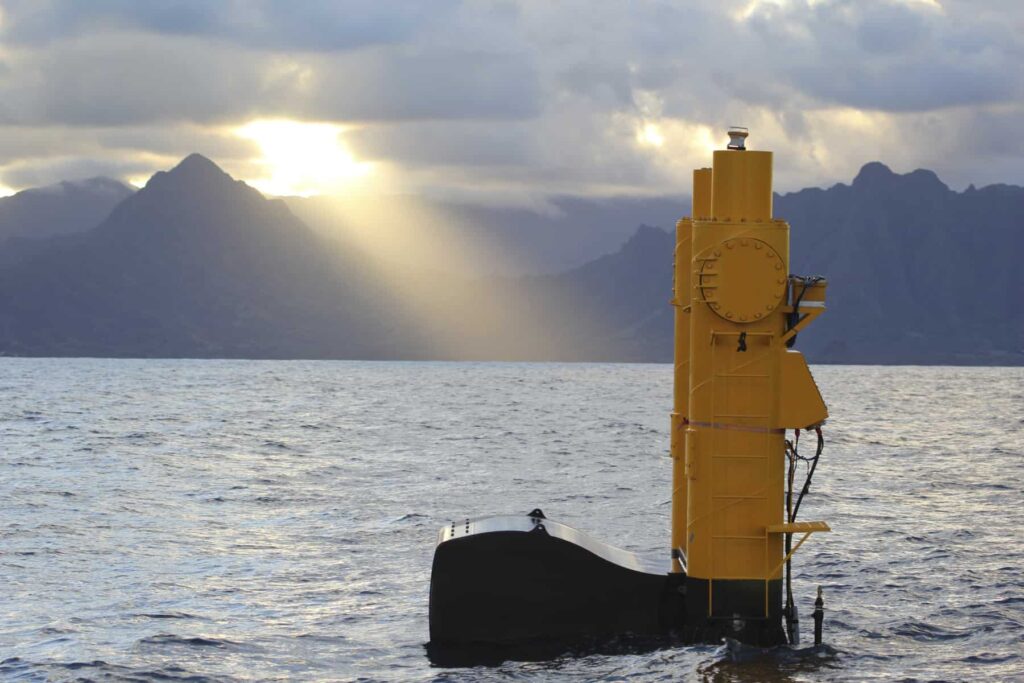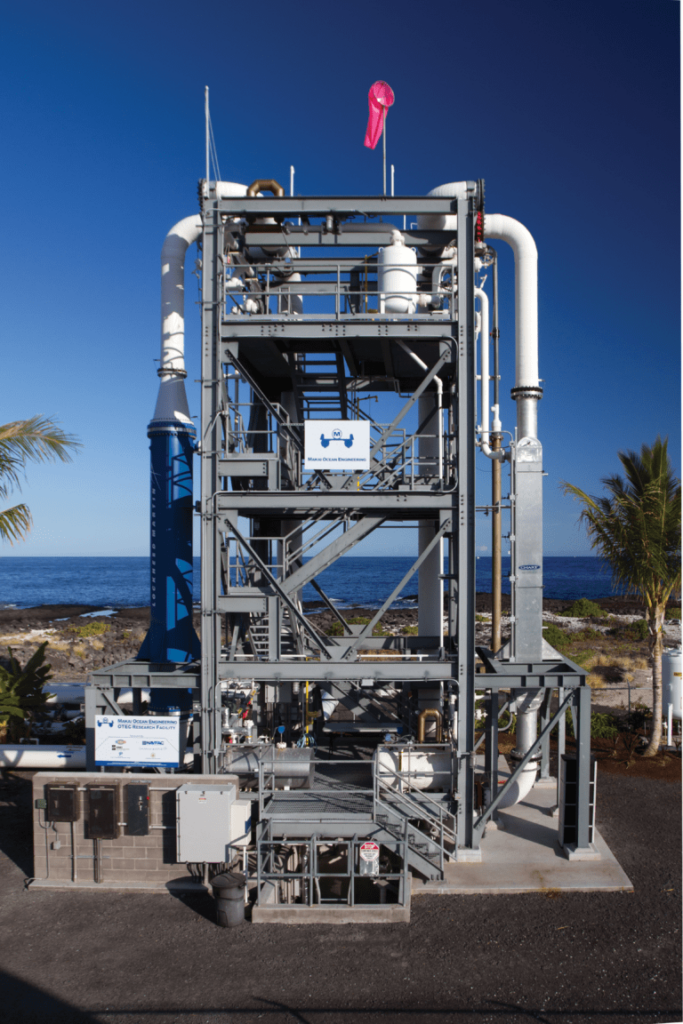Ocean Energy

Wave Energy
Global winds drive continuous waves with a force that beachgoers would easily recognize as powerful and unstoppable. Designs to capture this energy include Space Age-looking devices such as buoys with pistons inside that float up and down, gates that rock back and forth on the ocean floor, snake-like contraptions that twist with the waves, and turbines mounted inside tubes at the ocean’s edge that spin back and forth as water rushes in and out. The total resource is large and global, but expensive to harness, as the waves themselves damage or corrode equipment. Ultimately, capturing wave energy as a power source will include lining ocean coasts with hundreds of miles of power plants, a feat likely implausible given concerns about the possible impacts to the marine environment.

Tidal Energy
The moon’s gravitational pull raises the oceans several feet twice daily in cycles known as tides. Harnessing tidal energy requires technology similar to that used in conventional hydropower, so this resource is reliable, simple, and renewable. However, the availability of falling water and the requirements of large elevation gain between low tide and high tide limit the true feasibility of harnessing tidal energy. Optimal conditions exist in a few places around the world—Nova Scotia and northern France are two famous sites. In total, estimates for tidal capacity range from 3 to 4 terawatts (TW) of total power, which is big enough to make a difference, but not big enough to satisfy the globe’s total rate of energy consumption.
Ocean Thermal Energy Conversion
Another ocean-borne design known as ocean thermal energy conversion (OTEC) uses temperature differences between the relatively warm ocean surface (heated by the sun) and the cold ocean depths to drive a power plant. Unfortunately, because the temperature differences are small, these systems are plagued by low efficiency.

Salinity Gradients
Just as thermal gradients can be used to make electricity with OTEC, differences in salinity at the mouth of rivers where freshwater mixes with the ocean can generate electricity as water flows across osmotic membranes. While promising, early Norwegian experiments generated only enough power for a lightbulb. Undeterred, in late 2014 a Dutch team announced a trial of similar technology with the hope of making it economically feasible by 2020.1Toby Sterling, “Dutch seek to harness energy from salt water mix (Update),” PhysOrg, November 26, 2014, accessed August 27, 2016, link; and Sonal Patel, “Statkraft Shelves Osmotic Power Project,” Power Magazine, March 1, 2014, accessed August 27, 2016, link.Like OTEC, salinity gradient systems are also challenged with low efficiency.
Image Credits: Zacarias Pereira da Mata/Shutterstock.com; U.S. Department of Energy/public domain; NEHLA/Makai Ocean Engineering.


